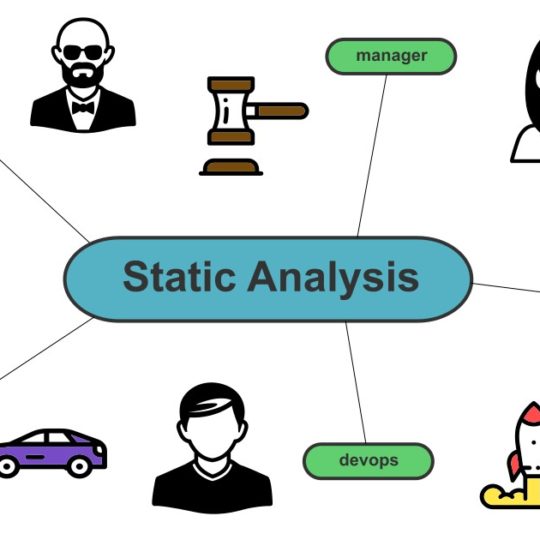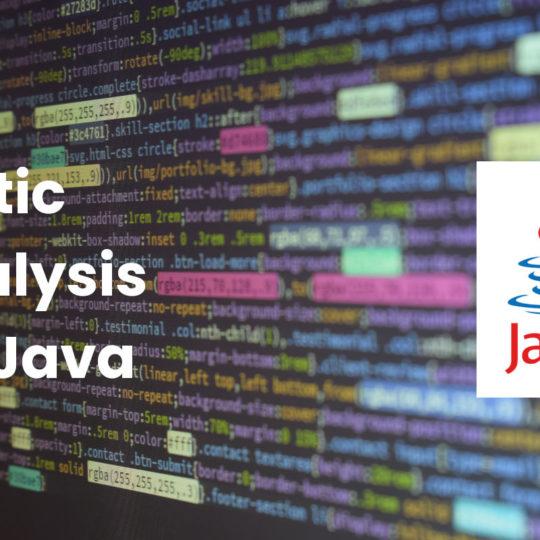While static analysis can be helpful, there are some limitations and disadvantages. For example, false positives can lead to a waste of time tracking down non-issues. In addition, effectively integrating static analysis processes into the development lifecycle requires significant effort to implement and maintain. Some tools also come at a high cost depending on the required functionality, the number of licenses needed, and the amount of code analyzed. Also, there is a risk that this process will provide a false sense of confidence that the code base is free of problems. The organization should consider these points alongside the overall quality and security strategy.
What is static code analysis?
A static analysis process automatically checks source code for best practices, performance issues and security vulnerabilities. The analysis typically occurs both when a developer creates the code and during the test phase of a build pipeline. These automated tools can help developers avoid known issues early in the development process, resulting in more efficient use of their time.
To learn more about how static analysis can be beneficial to development teams – read Why is static code analysis important?
Code Quality vs. False Positives
One of the main benefits of static analysis during the development lifecycle is improved code base quality. Whether checking for formatting issues, adhering to best practices, checking for performance problems or scanning for security vulnerabilities, the result is a better code base. But sometimes, the tool might highlight code that is not an issue. A false positive is when a static analysis tool incorrectly identifies a problem.
Let’s first admit that any static analysis program is just another piece of software that can suffer from bugs no different from the code the tool is analyzing. So, for a basic example, if a flag indicates a section of code suffers from a ‘divide by zero’ issue, but there is no possible way that the code could result in that error, that is a false positive. Of course, these situations will occasionally occur, but this is still one of the main arguments against using static analysis tools.
False Positive or Misunderstanding?
Occasionally, developers can quickly label issues as false positives, but they might misunderstand the problem, disagree with the diagnosis, or consider the flagged issue unimportant. Unfortunately, it is common for developers to view the feedback simply as noise since it is easier to ignore the issue than to spend time trying to understand it. In addition, some developers, who do not embrace a learning mindset, can get too comfortable in their current level of knowledge and find it difficult to accept that there are gaps in what they think they know.
These misunderstandings are likely more prevalent when introducing a static analysis process to an existing team with an existing codebase. Running the tool for the first time will often yield surprising results. For example, what they believed to be a best practice, could throw all sorts of flags. Developers would quickly dismiss the results as a false positive and degrade their trust in the tool. But, in reality, it was their misunderstanding of what is generally considered the best practice.
Integration and Effort to Maintain
Static analysis is likely to be introduced once an organization has matured to a certain level. At this point, the team(s) have gotten used to working in a particular manner and sometimes, change is hard. So, where in the development process will these tools be used? What are the expectations of the developers involved in the process? Will they be run in the build pipeline automatically, or will they be used locally during development or peer review? Consideration must be given to the impact on the team’s efficiency, even when the goal of introducing static analysis to the group should result in higher code quality.
After establishing the process, it will need to be maintained. Who will manage the rules? Who will enforce the process? Consider what happens when developers propose custom rules or contest existing ones. A higher-performing team could use a democratic approach to determine the accountability level they want for themselves. A newer or less experienced team might need to yield to decisions made by a technical leader or security specialist. Like any other process, the decision to implement static analysis cannot take a set-it-and-forget-it approach.
Language Specific
Finding a single option that will handle each language your organization uses might be challenging, depending on your chosen technology stack. Some tools can only support a narrow band of languages like those specific to C, C++ and C#. Others might only cater to JavaScript and its popular frameworks. There are plenty of options that will support multiple languages, though. As these tools continue to grow, the argument against using them because of language specificity is becoming less valid. If your organization uses some of the more common languages, IDEs and build pipelines, then finding a tool that fits should be easier than it once was.
Cost
The cost will always be an essential factor when introducing any new service. For comparison, the prices for static analysis tools can range from free or open-source options available for smaller teams to large-scale cloud-hosted solutions costing tens of thousands of dollars. Unfortunately, the return on investment for a solution such as this is difficult to ascertain. While these tools provide the possibility of time-saving for development teams, measuring the cost against the added quality and confidence would be better than measuring against developer efficiency.
It would be tempting to cut these costs if the tools catch only a few issues. But in the worst-case scenario, a security vulnerability introduced and exploited can cost the organization far more. So consider these costs like an insurance expenditure. First, determine the risk level by considering things such as developer experience, size and complexity of the codebase, the industry your product targets, and the consequences of a severe security situation. Then, if you believe you have a low-risk system (or just a high-risk tolerance), save money for other areas. Even if you can justify a higher expenditure, try the lower-cost options first and give it a trial period to ensure you are getting the value you anticipate.
Static Can't Replace Dynamic
Static analysis is only one part of an overall quality strategy. The static nature of this testing category does now allow any analysis of the system’s runtime behaviour. As a result, static analysis tools cannot anticipate how different software components function together when operating and cannot factor in environmental conditions and resource configurations. A combination of other testing procedures, such as unit, integration, end-to-end, load and penetration testing, will complement static testing to provide a complete picture of the system’s overall quality.
Weighing the Options
The strength of static analysis comes from finding common vulnerabilities early in the development process and is a simple way to mitigate some security risks. But it could create more problems than it solves. A poor choice of a tool or one maintained incorrectly can end up causing grief for the development team. Many legitimate false positives will result in developers chasing their tails and losing efficiency. A high cost may result in a poor return on investment when that money could have had a more meaningful impact in other areas. A properly chosen and implemented static analysis process can significantly benefit a team, but be sure to factor these downsides into the decision.






